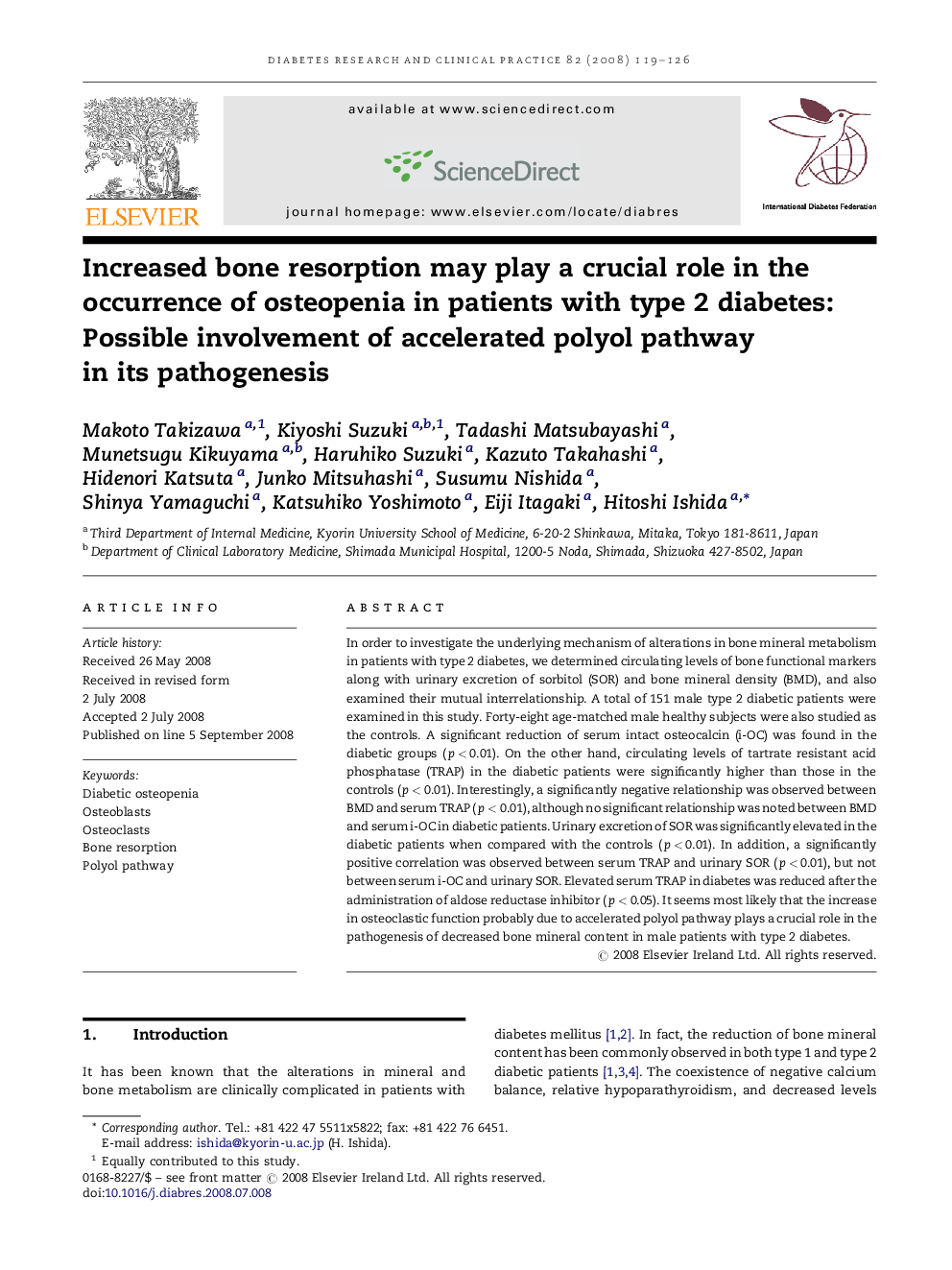| Article ID | Journal | Published Year | Pages | File Type |
|---|---|---|---|---|
| 2798287 | Diabetes Research and Clinical Practice | 2008 | 8 Pages |
In order to investigate the underlying mechanism of alterations in bone mineral metabolism in patients with type 2 diabetes, we determined circulating levels of bone functional markers along with urinary excretion of sorbitol (SOR) and bone mineral density (BMD), and also examined their mutual interrelationship. A total of 151 male type 2 diabetic patients were examined in this study. Forty-eight age-matched male healthy subjects were also studied as the controls. A significant reduction of serum intact osteocalcin (i-OC) was found in the diabetic groups (p < 0.01). On the other hand, circulating levels of tartrate resistant acid phosphatase (TRAP) in the diabetic patients were significantly higher than those in the controls (p < 0.01). Interestingly, a significantly negative relationship was observed between BMD and serum TRAP (p < 0.01), although no significant relationship was noted between BMD and serum i-OC in diabetic patients. Urinary excretion of SOR was significantly elevated in the diabetic patients when compared with the controls (p < 0.01). In addition, a significantly positive correlation was observed between serum TRAP and urinary SOR (p < 0.01), but not between serum i-OC and urinary SOR. Elevated serum TRAP in diabetes was reduced after the administration of aldose reductase inhibitor (p < 0.05). It seems most likely that the increase in osteoclastic function probably due to accelerated polyol pathway plays a crucial role in the pathogenesis of decreased bone mineral content in male patients with type 2 diabetes.
